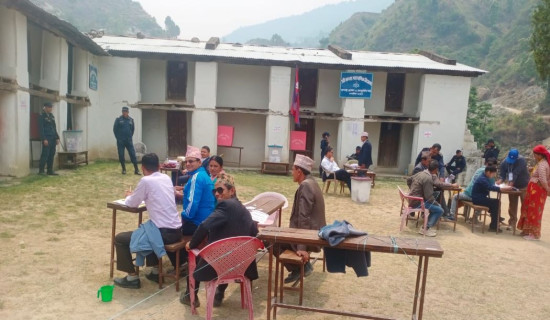- Saturday, 27 April 2024
Nepal’s Resilient History
Sugam Gautam
Nepal, known as the country of mountains, is home to tough and stoic people who endure challenging times with a genial smile. Every generation of Nepalis has faced various degrees of woes. Delving into prehistoric Nepal, we find that our ancestors were not even allowed to participate in schooling. The culprits behind this inhumane act were the aristocratic Ranas, who hindered national progress by denying education to commoners. Our forefathers died in ignorance while the Ranas nurtured their progeny under the roof of Durbar High School. The dismantling of the Rana Regime in 1951 BS raised hopes that the days of hardships were over. People were already beginning to flock to Durbar High School with towering ambitions.
Then, in 1990 BS, a deadly earthquake measuring 8 on the Richter scale shook the country, pushing the country hundreds of years back in terms of development. It lost an abundance of human resources, and the time it took to revamp the constructions delayed the overall development of the nation. Those who survived the disaster faced several challenges — they had to eke out a living with no roof overhead. Known for their resilience, Nepali people marched forward, endeavouring to overcome the painful disaster.
Nepali politics took a different turn in 2017 BS when King Mahendra dissolved multiparty democracy, citing political instability, and introduced the partyless Panchayat system. Unaware of the political progress and the consequences it was going to bring, common people continued their lives while politicians were prosecuted and put behind bars. No one was permitted to speak against the king, and strong censorship on the press meant that there was no room for dissent to spur development. People watched every word they spoke to avoid retribution. Such was the condition at the time.
It was only thirty years later, in 2046 BS, that King Birendra was compelled to lift the ban on political parties due to incessant demonstrations to restore multiparty democracy. Everyone thought order was restored and that the nation would now head towards a prosperous path. What followed next was a series of gruesome occurrences that would forever be etched in everyone’s memory. King Birendra’s demise saddened the whole country, and this accident brought more instability to the nation.
The Maoists were resolute about their agendas. By the time monarchy was abolished in Nepal, as many as 17,000 people had lost their lives in a decade-long campaign launched by the Maoists. The sacrifices during the Maoist revolution were unparalleled. People were filled with hope that this new progress would put an end to the chaos and instability. To everyone’s dismay, the country sank deeper into political instability following the 2072 earthquake and economic blockades.
While every country boasts a proud history and harbors harrowing stories, Nepal is yet to write the notes of prosperity. Nepali people live in hope that something good will happen, though they are often disappointed in the end. Thanks to their high-spirited character, they have lived through different nature of crises throughout history. Reflecting on the arduous lives endured by the Nepalis, one might wonder what strength of character it requires to be Nepalis.
















